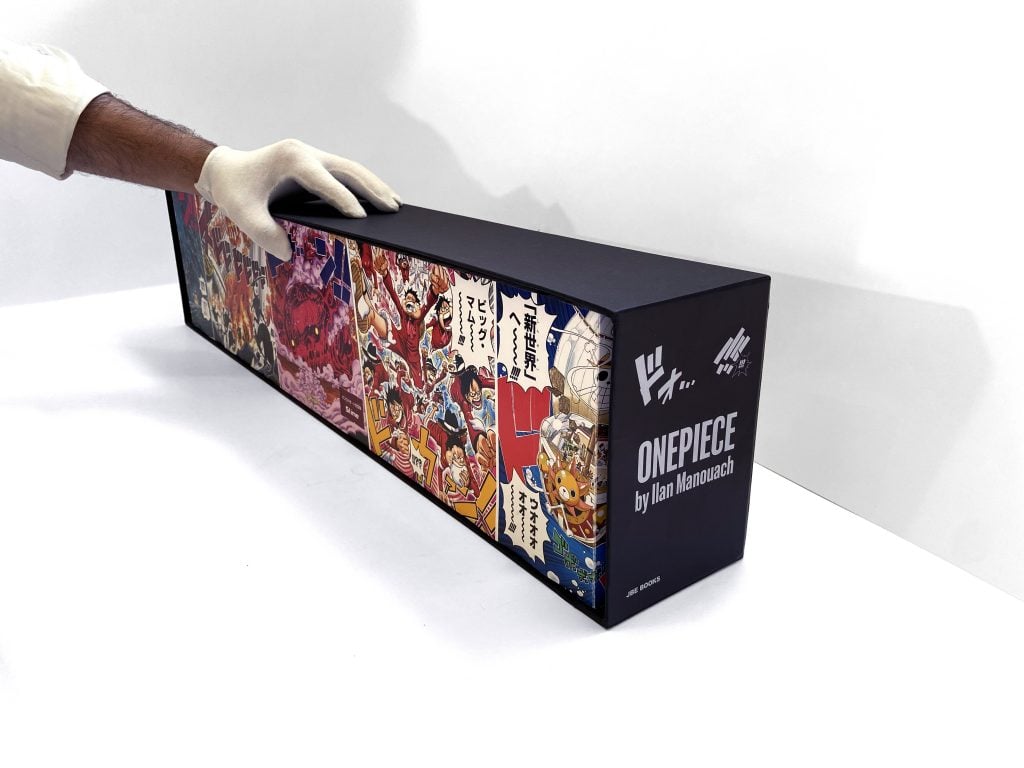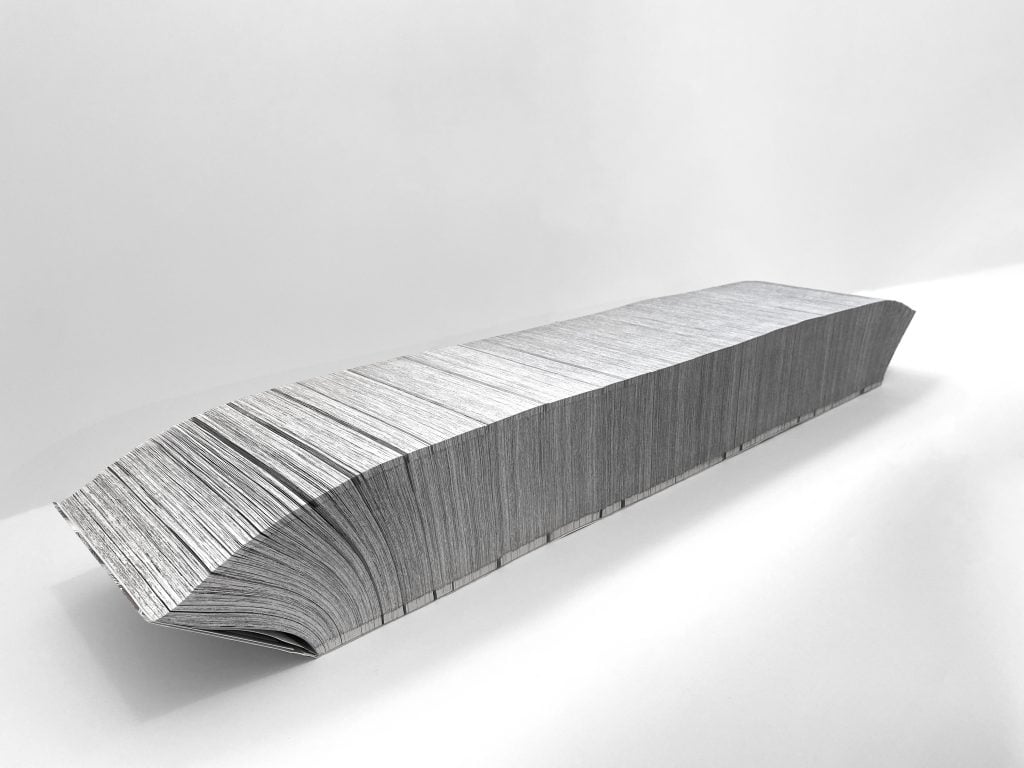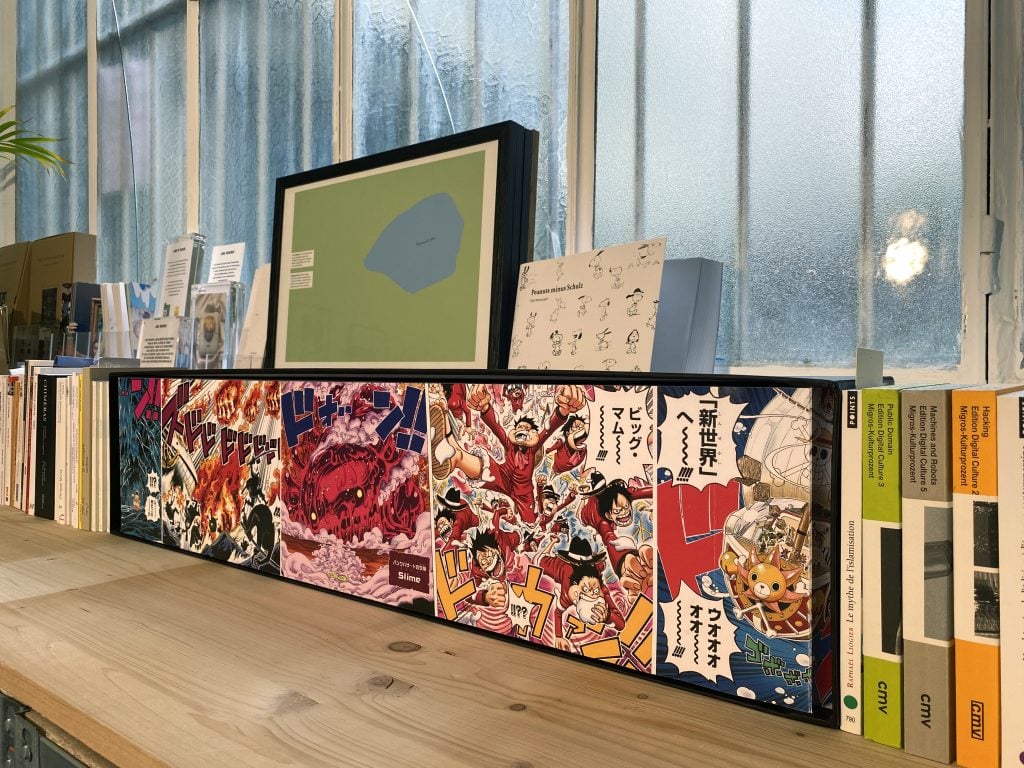Pop Culture
‘One Piece’ Is the World’s Most Popular Manga. Now an Artist Has Transformed It Into an Epic Book That’s Impossible to Read
It's the world's longest book. It's also a conceptual art comment on fame and internet culture.

It's the world's longest book. It's also a conceptual art comment on fame and internet culture.

Vittoria Benzine

The longest book ever—a manga volume topping 21,450 pages and 37.5 pounds—is here, and we have an artist to thank for it.
ONEPIECE, a hybrid publishing stunt and conceptual art project from Ilan Manouach, appropriates every digitally released panel of the long-running Japanese comic One Piece into a single epic object meant to be viewed as sculpture rather than read conventionally.
The artist’s Brussels-based nonprofit Echo Chamber supported the ONEPIECE release, which comes some 25 years after author Eiichiro Oda began publishing the swashbuckling serial. The resulting volume’s 31.5-inch spine features full-color illustrations of scenes from the saga and the story’s protagonist, Luffy D. Monkey.
At €1,900 ($1,893), the edition of 50 signed and numbered copies sold out within days of its September 7 drop through French publisher JBE Books. The launch came just months after Guinness crowned Oda’s One Piece the most highly circulated comic in existence, having sold more than half a billion copies.

‘ONEPIECE‘ opened. That’s what 21,450 pages looks like.
Manouach’s gargantuan object is not functional, since cracking it open could damage its spine, bound by Elise De Maio. It builds on the artist’s practice of repurposing existing comics as a form of art. His past initiatives have included his Shapereader project, which employed “haptic equivalents” to create a tactile storytelling experience for visually impaired readers. Another of Manouach’s projects is the Neural Yorker, an AI-generated series of New Yorker cartoons.
With ONEPIECE, Manouach says he is out to comment on the commodified nature of comic books, which have enjoyed recent market highs similar to trading cards in the digital era. “Comics are dual objects,” his site says, citing their cultural value for readers and monetary value for collectors. “Although these two functions are not operating along a clear-cut divide, they sometimes run opposite to each other.”

ONEPIECE display idea, pictured alongside another ‘Peanuts‘ themed project by Manouach.
“ONEPIECE can only be contemplated as a materialisation of digital comics’ very own media-saturated digital ecosystem,” Manouach continues. “ONEPIECE exists only as an object of pure speculation.”
The artwork’s release has ruffled a few features (or pages?). Oda isn’t credited in Manouach’s conceptual-art project, even though the object is composed of his serialized weekly tale as unspooled in Japanese magazine Shōnen Jump since 1997. A spokesperson from JBE Books told the Guardian there’s no copyright infringement, because collectors can’t read the story.
“The product you mentioned is not official,” someone from the international rights staff at Oda’s Japanese publisher told the Guardian. “Our licensee in France which publishes One Piece is the publisher Glénat.” (Oda doesn’t really need the money, though. The Guardian calls him “the richest manga creator of all time, with an estimated net worth of around $200 million.”)
Oda could even top Manouach’s unwieldy tome in the future, if he wanted. Gaming magazine Kotaku noted that while ONEPIECE only covers the 98 volumes of One Piece already in existence, Oda himself has said the manga is in its “final stages,” meaning there’s more story—and maybe even larger volumes—to come.